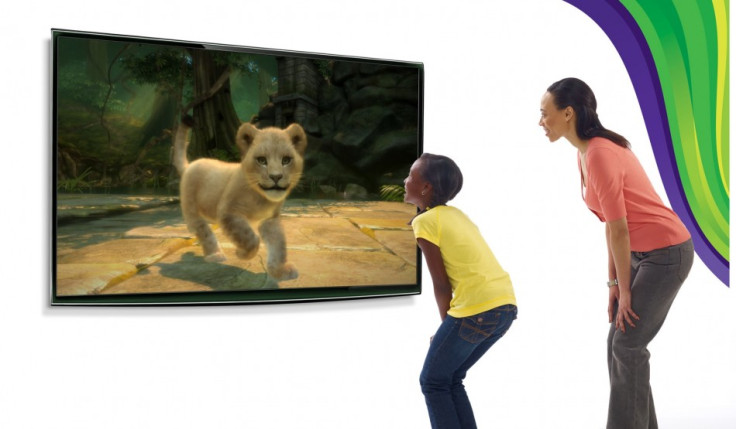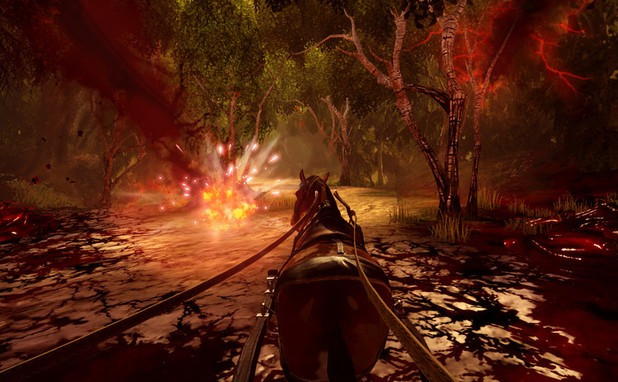Why Games Matter Blog - DisKinect
A blog dedicated to big issues affecting the games industry
DisKinect - It's hard to lose yourself when a game won't leave you alone

Immersion: That's the gaming industry's byword nowadays. From sleek and graphic simulations like Battlefield, to 3D televisions and alternate reality headsets, today's computer games are about taking you places and keeping you there.
Escapism, that's another one. After a hard day's graft, one of the best ways to unwind is to fire up World of Warcraft - or Diablo or Skyrim - and lose yourself in a fantasy world that's bigger than two Manhattans.
Motion-sensitivity is another gaming buzz phrase. Ever since Nintendo swept up the entire casual market with a mere flick of the WiiMote, software developers and console builders alike have been jogging along, way behind, trying to catch the leftovers.
There was the PlayStation Move, which nobody bought, and the Xbox Kinect, a black, shrieking drill-instructor of a peripheral, that demanded you please it by hopping up and down to its frothy party games.
Since limping onto shelves in 2010, the Kinect's software line-up has ranged from lightweight (Kinect Adventures) to weird (Steel Battalion) to lightweight-and-weird (Kinectimals). Nothing we've seen on the platform so far has managed to bridge the gap between hardcore content, and easy-to-learn, intuitive controls.
The Kinect is for people who don't play games; those of us looking for big, immersive game worlds that we can easily escape into, know to stay clear of motion-sensitivity.

Or so I thought, until I heard about Fable: The Journey. A Kinect-savvy rendition of Lionhead's Fable series, The Journey seemed like a perfect opportunity to breathe some worth into motion-sensitive games. With a rich, open-world like Albion attached, I imagined strolling around lustrous countryside and song-soaked beer taverns in real-time, reaching out and touching the environment for myself.
Control-pads can only say so much: Liberty City and Azeroth are all well and richly-layered, but some of that precious immersion is lost between button press and on-screen action. Fable: The Journey would remedy that; instead of pressing A to burp in someone's face, I'd be able to do it manually. My sense of being there would be that much stronger.
But something felt wrong. The controls themselves weren't the problem, The Kinect was fanickity and a pain to calibrate to begin with, sure, but developers and players are past that now. Kinect controls today can be more or less relied upon to be functional.
It wasn't necessarily the game itself, either. I'd brushed and cleaned my horse, galloped through a forest and even stopped for a sit down at a camp. In relation to other Kinect games I'd played, Fable: The Journey had the density of a Dickens novel. It was something else, something to do with translation...

It finally clicked when we stopped for a second time. When I'd first pulled my horse over for a rest I'd thought it just another part of the game's opening tutorial: I was being led through the basic inputs and gameplay mechanics that I'd need to navigate a much bigger environment later.
You know, like Fallout, or Oblivion, which both pull the trick of schooling you in closed space (a nuclear bunker, a palace dungeon) before releasing you into the game proper. Fable: The Journey's country lanes felt like a reasonable equivalent; but after two-hours of playtime, it was clear that Fable wasn't going to open up.
And it was all the Kinect's fault; despite the marketing guff about intuitive this and immersion that, motion-sensitive controls are a restriction. They're great for action beats - swatting away incoming arrows and bopping goblins on the head has never felt more lifelike - but the Kinect has no words for "stroll" or "wander."
It's not a peripheral for players. Fable: The Journey makes that clearer than ever. Here is a series notorious for its "go anywhere, do anything" ethos, being forced to strip bare to make room for motion-sensitivity. You can't walk, you can't turn your head; you can't breathe in for yourself all that thick, Lionhead atmosphere that makes game worlds like Albion such a relief to be in.
At best you can waggle your arms and get the game to spoon-feed you a quick semi-cutscene: As you automatically move from dirty horse (clean it!) to apple tree (pick the apple!) there's nothing there for youto find for yourself. The Kinect's limited vocabulary means you always need the developers on hand to tell you what's going on.
Motion-sensitive controls are supposed to put you closer to the action: That's idea, right? Thanks to Kinect, I'd be able to feel, actually feel, like I was there. But the contradiction is that, due to Kinect's mass appeal, its inputs are abbreviated down to the bare minimum. There's not a lot you can do with it - I felt further from the game world than ever.
With all the flashing prompts and meters, it's hard to immerse yourself; having to stay constantly on guard for the next round of reflex tests doesn't feel like escapism. There's no downtime with Kinect. The platform's geared towards part-time players and short-term games; exercise sims, Dance Revolution and so on.
It's a peripheral designed to make the game-y bits - like fighting and jumping - more tactile, but today's games can do more than that. Fallout, GTA and WoW are all built on the idea that we want to explore, that players would prefer to deviate from objectives whenever they like and return to them in their own time.

The Kinect, the Wii and the Move will never let us do that. The technology has its place, making party games that much more fun and accessible, but in terms of bringing us out of our own world and into the developers', motion-sensitivity still has a lot to learn.
Complex inputs that let us tilt the camera towards Cyrodiil's horizon, or walk Niko Bellic to dinner with his cousin, are best left to control-pads; no matter how much I wave my hands around, the Wii and Kinect will always keep them tied.
© Copyright IBTimes 2025. All rights reserved.























